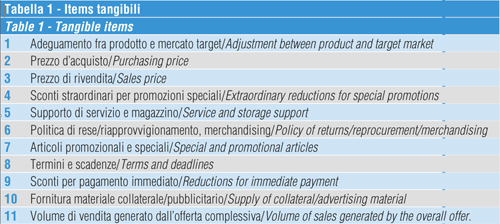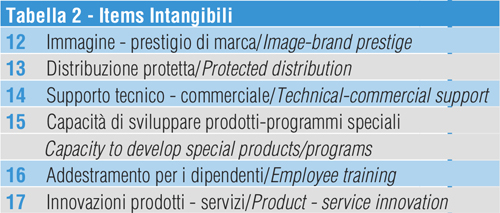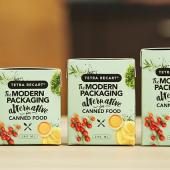Value according to the customer-consumer and the customer-distributor
Understanding the differences is critical to business success. In issue 11-12/2011 of ItaliaImballaggio we introduced the concept of “value for the customer" and we stressed the importance of the same as a strategic element to be considered when developing a company's business policy.
We noted that the value generated for a customer-consumer is substantially different to the value generated for a customer-dealer. The former appreciate the product offered within a personal utility scale, while the latter judge the same by the potential for deriving profit from the same.
Given the importance of modern retail distribution it is worth dwelling on how to define and measure the "value for the distributor", hoping to stimulate readers to explore this highly important aspect of a company's business strategy.
In general, the value for a distributor comprises two groups of items: tangible ones (that concern measurable and verifiable characteristics of the company’s offer) and intangible ones (whose appreciation is largely individual and difficult to measure objectively). A good description, analytical and extensively verifiable using statistical methods was created by the Canadian team of Professor Fogg: «Each and every item will have a different weight for each particular market sector. For example, areas where the risk of unsold items for retailers are very high (clothing, books) will attribute a decisive importance to items 5 and 6, while articles that entail a fierce price struggle (resale of building materials, flexible packaging film, expanded PS packaging) will attribute greater importance to items 2,3 and 4 (table 1).

Each sector attributes importance to specific points at the expense of others and each supplier is judged as being good or not-so-good in each of the single items of the table. An evaluation “grid” is applied consciously (by well trained buyers of the big chains) or unconsciously (by managers of small salespoints) to judge the offer of a company that intends operating with distribution. It is clear that a conscious top management will study the table in the planning of business strategies and strive to improve the weakpoints rather than consolidate the strongpoints. The aim is to become aware of the items that generate value for the distributor and to rise in the rating, be this conscious or unconscious, of ones customers.
All sales people know that customers go beyond just rating price, payment and delivery. There is also a table of "intangible" elements or items to be considered alongside the previous one and that contributes to formulating the overall picture. The selfsame Canadian team has defined certain items (table 2) as decisive.

The sales people will recognize many of the themes of their everyday conversations with distributors, and like the previous case, top management will already have decided on the "headings" of strategic plans for improving/strengthening and optimization.
The organizational value of this work method is extraordinary. On a practical level, in the simplest cases DIY surveys can be organised with the participation of the sales force. The results are surprising, even with little experience. In more complex cases it is worth turning to a consulting company that can offer a systematic approach to data surveying and processing.
A cura di Roberto Furlanetto,
Consulente di Direzione
[email protected]




















